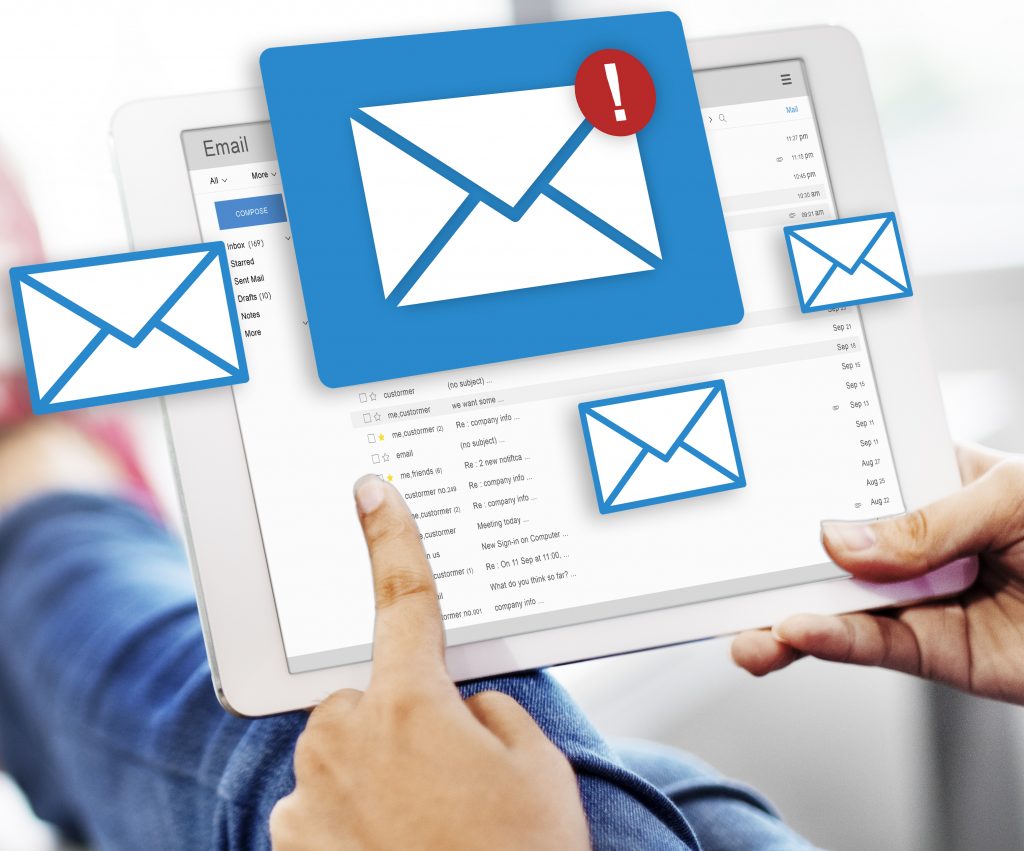
If you ever feel that the definition of happiness is an empty inbox, you’re not alone. A report from Adobe found that 42% of Americans admitted to checking their email in the bathroom, and 50% checked their email while in bed. The goal towards inbox zero can take over our lives, and for small business owners the line between work and leisure can be especially blurry.
Don’t worry – getting on top of your inbox is possible! It can also help you reduce stress, increase productivity and provide more consistent and professional services to your clients. We suggest you confront this task from three perspectives – streamlining, managing expectations, and staying organized.
Streamline
First things first. Get those systems in place! Creating healthy separation between dog work and the rest of your life is one way to avoid burnout. If you don’t already have a separate work email address, now is a great time to consider this. It allows you to stay organized, look more professional, and to genuinely ‘switch off’ when you need to, like when you’re on holiday. You can also set this email up with a range of template responses to common enquiries. Set aside some time to craft a series of replies, from training requests to puppy classes or dog walking services. That way you can quickly get back to people with an easy copy-paste. It also means your responses have been thoughtfully constructed, rather than being sent in a rush as you head to your next client.
If you spend a lot of time going back and forth with clients to gather the information you need, you might also consider using forms. This could be a form on your website which gathers some essential details, or something you send to clients once they get in touch and want to engage your services. Keep it clear and succinct – your clients may also be battling feelings of stress and inbox overload!
Manage expectations
Dog pros can be very ‘on the go’ people, from working with clients, training and walking dogs, driving to and from appointments, and running classes. The pressure to respond quickly to every email you receive can be stressful. One way to approach this is to manage the expectations of those who get in touch with you, as well as the expectations you place on yourself. Set up an automated out of office detailing when clients can expect a response, and make sure you update this when you’re away or unwell. If you have specific days or times you work on emails, you can mention this as well. You could also create an FAQ page on your website to direct them to in the interim. If you do become swamped and keep guiltily glancing at that list of outstanding training plans on your desk, let people know what’s happening with a holding email. A quick message with an updated timeline is likely to be received more positively than silence. It also mitigates against that check in email clients may send when they don’t know what’s happening.
While it can feel counterintuitive, constantly checking your email can actually hamper productivity. It’s easy to develop an unhealthy relationship with your inbox, in which you check it, feel overwhelmed, check it again, but fail to actually action anything. The American Psychological Association found that those who are constantly receiving and responding to email notifications tend to be significantly more stressed than those who engage with email less often. Notifications ignite our stress response, so a simple way to reduce this is to turn them off, especially when trying to do deep and focused work. Build inbox time into your master schedule instead, such as checking it twice per day for a set period of time (put a timer on to make sure you stick to it).
Organize
Is your inbox a calm home of order and minimalism or is it more a chaotic share house after a raucous party? While there isn’t one way to manage an inbox, having thousands of emails sitting there staring at you can be exhausting. The perpetual battle against spam is one area that is worth staying on top of. Rather than deleting those pesky emails, make it a habit to also unsubscribe so they disappear for good.
It can be tempting to create an elaborate maze of folders and sub-folders and start filing things away. This out of sight, out of mind approach can backfire as you try to remember which folder lives where and spend half a day creating a whole new set of categories. These days email accounts have pretty sophisticated search functionality, so provided you know a few basic details most things are easy to find. It can be a lot quicker and easier to file everything away in one big ‘archive’ and use folders more sparingly.
Two folders which may be worth considering are a ‘reading time’ and ‘pick me up’ folder. If you love to nerd out on articles and dog behavior newsletters, file these into a ‘reading time’ folder and set aside time each week to sit down with a cuppa and go through them. Digesting these longer reads in a focused and intentional way will make them much more enjoyable. A ‘pick me up’ folder is ideal when you’re having a bad day. Received a glowing testimonial or amazing training update? Pop these into a specific folder and when you need to remind yourself of the incredible work you do, visit this folder for a little boost.
With a few simple changes you’ll soon be training your inbox rather than it training you. We’d love to hear your top tips for managing inbox anxiety and staying on top of this essential tool.


